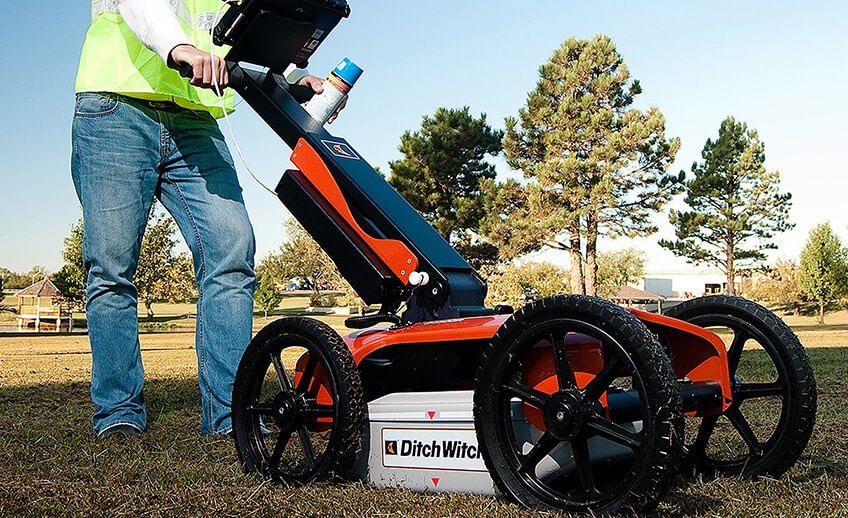Ground Penetrating Radar
Ground Penetrating Radar (GPR) is a device that uses high-frequency radio signals that’s broadcasted into the ground with a return of reflective signals sent to the receiver that end up being stored on digital media. The computer simply measures the total time taken for each pulse to travels to and from the object which shows its location and depth. The signals being reflected on the unit’s LCD panel are usually already interpreted by the system.
Three main components make up a GPR equipment:
- Control unit
- Antenna
- Power supply
Different types of GPR devices are used in the data collection of a targets depth and location. Two factors determine the GPR device that’s needed: size and depth of the object that needs to be located. The device’s radar unit gives and receives mirrored signals that are up to a thousand times per second. Our field operators are able to immediately view the analyzed signals on location. Moreover, these get stored on the device’s system and can be further analyzed by being downloaded on a computer if need be.
GPR Data Collection and Analysis
When there is need to locate objects like post tension cables, rebar or conduits, the GPR system that’s used in such a case is a high-frequency one. There are two ways that the data can be collected: use of simple line scans that help evaluate the thickness of the concrete or the use of a grid format that gives a map of targets found in the concrete. The later method gives visibility to virtual slices in the reflection which comes in handy when determining the depth of the objects and in creating a 3D image map.
The waves from any GPR device travels through multiple materials. The GPR waves are affected by different types of fill material, soil, concrete, debris and varied amounts of saturated water as they all have varied conductive and dielectric properties that play a key role in the interpretation of the GPR data. And while anyone can see the data images displayed on the LCD screen, interpreting them needs a field expert to accurately establish the findings. That’s where we come in.
Depth of the GPR Device
The depth of the GPR device is one of the most frequently asked questions. In the majority of the cases that we have handled, the depth range is usually dictated by the frequency of the GPR antenna and the subsurface material. For instance, we use higher resolution when locating objects such as conduits and rebar in concrete. A GPR device with a higher frequency of 1,000 MHz is what we use as it’ll give a detailed resolution of up to a depth of approximately 24 inches.
On the other hand, when an application needs to penetrate deeply into the ground soil, we’ll more than likely use a lower frequency of about 12.5 MHZ to 500 MHz. Again, this is dependent on the depth of the material found on the subsurface that can range between anything from several inches to thousands of feet.
In need of Ground Penetrating Radar service? Give us a call today and let our team of professionals sort you out.

